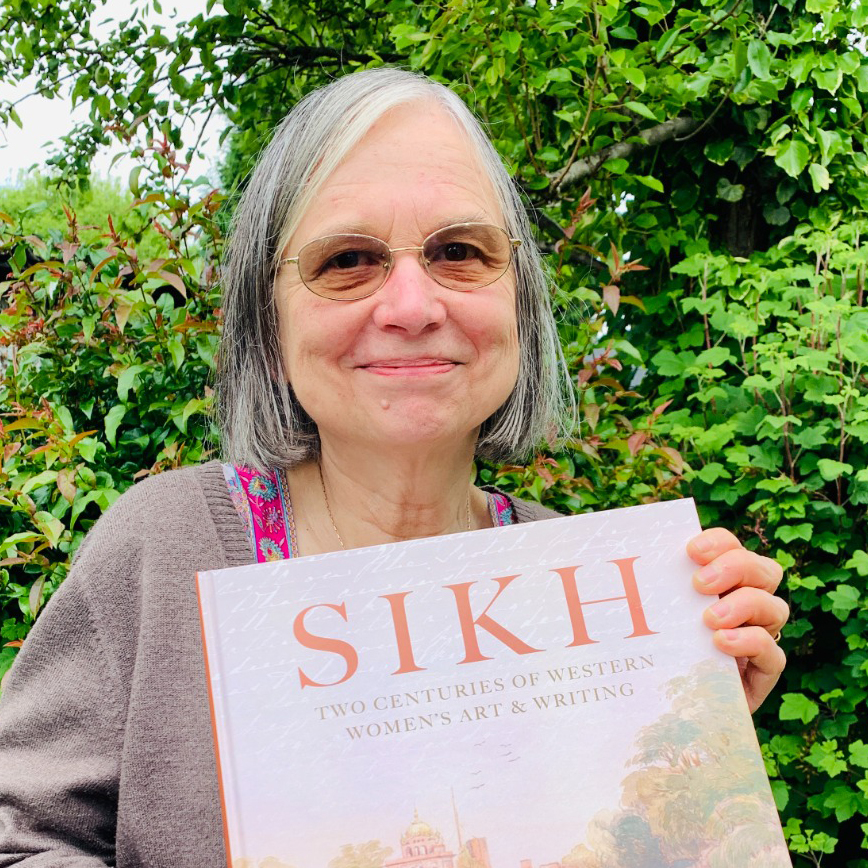Open to New Light: Quakers and Other Faiths
Eleanor Nesbitt (Collective Ink, 2023)
Researching this book brought me one surprise after another. I hadn’t previously known that George Fox, the founder of what is now the Religious Society of Friends (Quakers), was reading the Qur’an (an English translation of a French translation) in the 1600s. Not only that but when, in 1680, he wrote a letter to the king of Algiers about the plight of Quakers and other captives in his domain, he quoted from the Qur’an. Fox pointed out that the captives were being treated in a way that fell far short of the Qur’an’s ethical teachings. I did, however, already know that in 1658 Mary Fisher, a Yorkshire housemaid, had intrepidly travelled to Turkey to share the truth of God’s indwelling spirit with the Turkish sultan and that she had been respectfully received – in contrast to the public flogging and imprisonment she’d experienced in England and America.
Another of my discoveries was that, on a gurdwara in Barking, a relief of Maharaja Ranjit Singh, the Sikh ‘Lion of the Punjab’, can be seen alongside one of his near-contemporary, the Quaker social reformer Elizabeth Fry. From Quakers in Aotearoa/ New Zealand I learned of the interactions between the Maori and Quakers. I discovered, too, the part that Buddhist spirituality has played in the spiritual journeying of many north American and European Quakers. At the same time I realised that ‘liberal’ Friends are only about ten per cent of Quakers worldwide.
One surprising discovery was a flurry of correspondence between ‘Abdul’l-Bahá, the eldest son of Bahá’u’lláh, the founder of the Baha’i faith, and some British Friends in the run-up to the First World War. In 1913 ‘Abdu’l-Bahá actually participated in a Quaker meeting in London.
My book introduces readers to the ways in which Quakers have interacted with not only Baha’is but also Buddhists, Hindus, Jews, Muslims and Sikhs and I’ve included Pagans, plus followers of indigenous religions and also Humanists. Do read the book to find out why. And, in case you assume that Quakers are completely distinct from all these other religious groupings, there is in fact a growing, if small, number of Friends who describe themselves as both Buddhist (or Muslim or Hindu) and Quaker.
What exercised me most was trying to summarise impartially the ongoing story of Quaker-Jewish relations. Some Quakers in the UK and elsewhere are Jewish. Some Jews regard Quakers as treacherous: having helped Jews who were fleeing the Nazis they have more recently been standing in solidarity with Palestinians. I suggest that the Quaker response has instead been a consistent one – consistent with Quaker principles or ‘testimonies’. These affirm equality and justice.
Chapters on relationships with particular faith communities are contextualised by a chapter about pointers to interfaith understanding that appear in Quakers’ ‘books of discipline’ such as Quaker Faith and Practice. Another chapter focuses on a range of interfaith initiatives in the UK and north America.
Readers of many backgrounds and persuasions will find much of interest both in the summary of important themes and in the sometimes quirky detail. Take, for example, the very far from exemplary Josiah Harlan, a multilingual nineteenth-century Quaker adventurer who raised an army and was almost certainly the first American in Afghanistan.
Among the book’s many quotations are William Penn’s words: ‘The humble, meek, merciful, just, pious, and devout souls are everywhere of one religion: and when death has taken off the mask they will know one another, though the divers liveries they wear here makes them strangers.’ Penn, the founder of the state of Pennsylvania, had spoken with Natïve Americans ‘as an equal in their own language of the Great Spirit who made me and you’.

